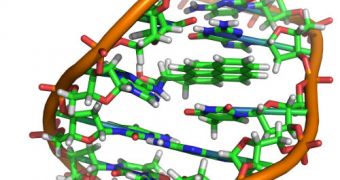One of the main areas of research in science has lately been the development of smaller and smaller robots, of the type that were proposed in science-fiction books decades ago. A Caltech graduate student announces that the first steps have been made towards completing a molecule-sized robot.
Micro-droids have captured the imagination of robotics experts for a long time, but it's one thing to dream about such a machine and quite another to build it. The most pressing aspect is getting the machine to become smart.
But it's virtually impossible to place devices that would underlie this so-called robotic intelligence into a structure that is only a few atoms large itself. This conundrum has plagued roboticians for some time.
But computation and neural systems graduate student Nadine Dabby, from the California Institute of Technology (Caltech), says that the answer is simpler than anyone anticipated – simply use the intelligence of the environment in which the small-scale robot operates.
The student created a one-molecule robot, which proved capable of following a trail of chemical “breadcrumbs.” The innovation will be presented at the TEDx Caltech conference, in January 2011.
Dabby is also the co-author of a Nature research paper that was published in May 2009, and which described in detail a molecular spider capable of walking down a preset path.
This is possible only because the preset path and the “legs” of the spider are made up of short DNA segments. The sequences are complementary, which means that the spider will have one foot affixed to the path for a while, and then move on.
The key to this system was stickiness. If a spider leg stuck to a DNA segment in the path for a period of time, then the substrate lost some of its ability to attract another leg. This means that the second leg to touch down in the same area was held for a shorter period of time.
This imprinted a walking-like motion in the spider, but no real sense of direction. Using a Caltech-developed technique called DNA origami, experts are now able to create an actual path.
The four-legged spider uses only three legs to move forward, while the fourth is used for another purpose. It can move around at a speed of a few nanometers per minute.
This was determined following analysis in which it was tagged with fluorescent markers, while researchers observed it using a technique called single-molecule microscopy.
Dabby believes that additional tweaks brought to this technology might enable the creation of efficient drug-delivery systems. Additionally, other experts believe, it is conceivable to we could one day produce DNA-repairing machines.

 14 DAY TRIAL //
14 DAY TRIAL //